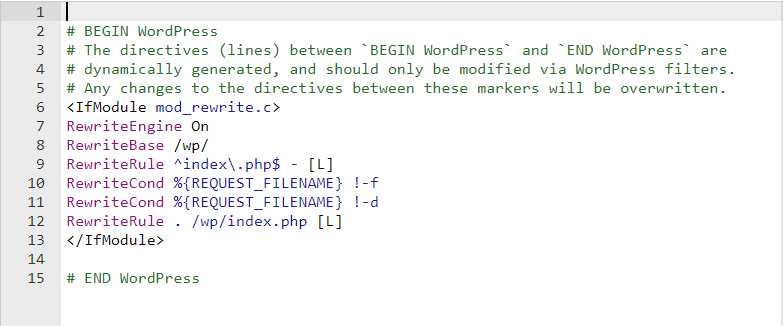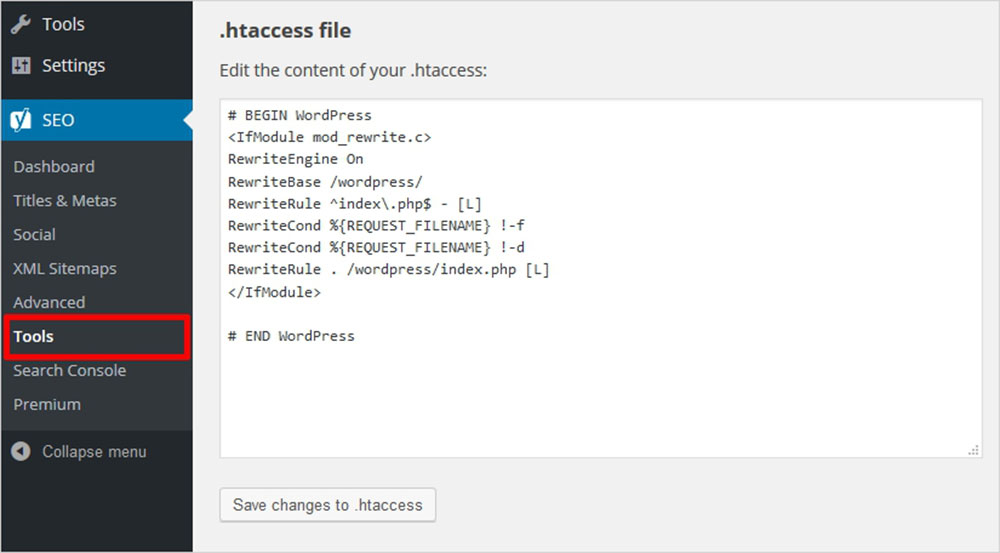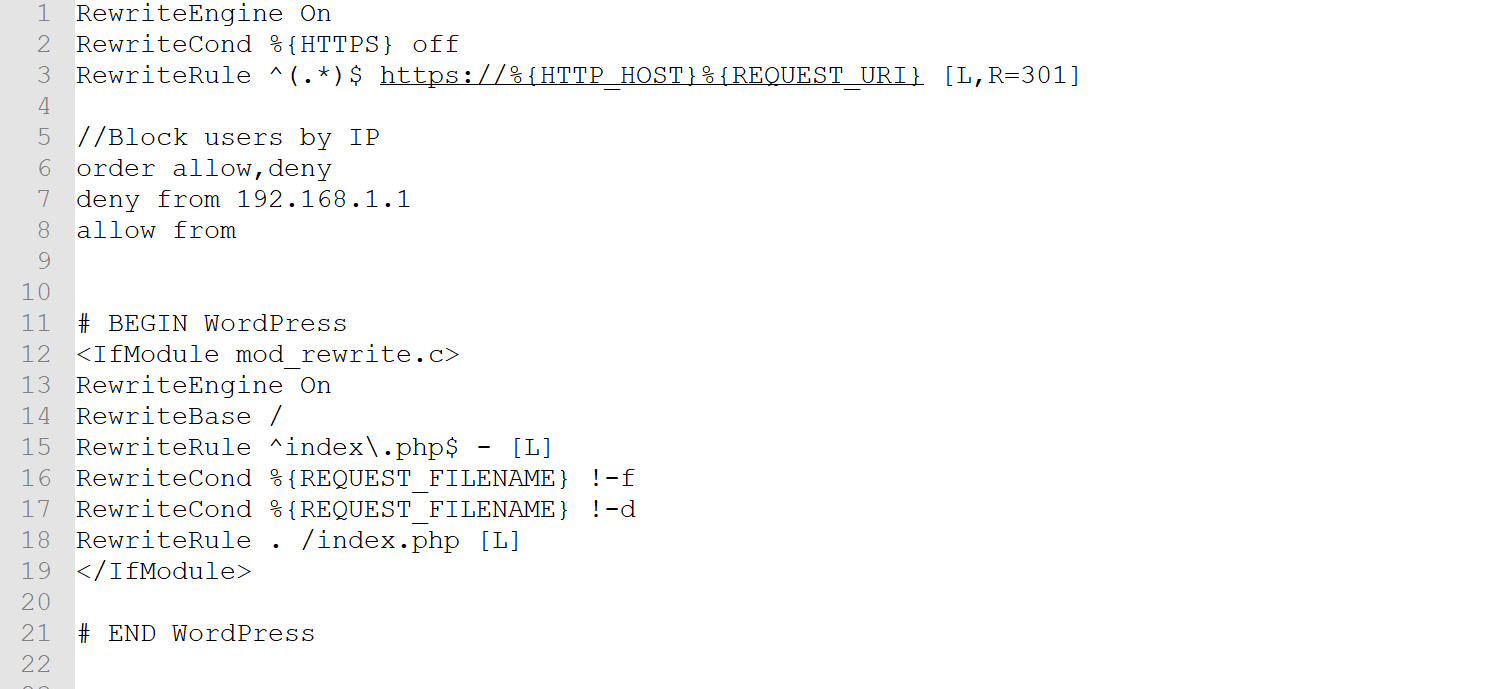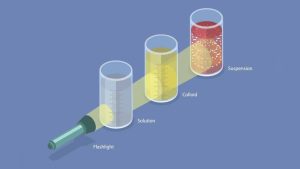Are you curious about what your WordPress site’s .htaccess file should look like? You’re in the right place.
This tiny, yet powerful, file can have a big impact on your website’s performance, security, and SEO. Imagine it as the backstage manager of your site, quietly orchestrating the way your content is delivered to visitors. But with great power comes great responsibility—one wrong move and your site could face unforeseen issues.
You’re probably wondering how to make sure your. htaccess file is optimized without risking errors. Don’t worry, we’ve got you covered. You’ll discover the essentials of crafting a perfect. htaccess for WordPress, tailored to boost your site’s speed, fortify its defenses, and enhance its visibility on search engines. Keep reading to unlock the secrets of this critical file and empower your website to reach its full potential.
Htaccess Basics
The htaccess file is crucial for WordPress. It helps control how your site behaves. This file can manage redirects and set security rules. It is usually found in your website’s main folder.
The file location is important. It is typically in the root directory of your WordPress site. This means it sits in the main folder where your website’s files are stored. Knowing its location helps you make changes easily.
Accessing and editing the htaccess file needs care. Mistakes can cause problems. Always make a backup before editing. This ensures you can fix any errors quickly.

Credit: www.hostinger.com
Default Htaccess Structure
Your WordPress site needs a special file. It’s called htaccess. This file helps manage how your site behaves. It controls things like permalinks and security.
The WordPress core rules in the htaccess file are important. They make sure your site runs smoothly. The file starts with a line that says “BEGIN WordPress”. It ends with “END WordPress”. Between these lines, the file has codes.
These codes handle links and security. They help your site load fast. They keep it safe from bad guys. Always keep this file updated. It’s key for your site’s health.
The sample code below shows how it looks:
# BEGIN WordPress
RewriteEngine On
RewriteBase /
RewriteRule ^index.php$ - [L]
RewriteCond %{REQUEST_FILENAME} !-f
RewriteCond %{REQUEST_FILENAME} !-d
RewriteRule . /index.php [L]
# END WordPress
Security Enhancements
Enhancing WordPress security with a properly configured. htaccess file is crucial. It should block unauthorized access, restrict directory browsing, and prevent PHP file execution. Strengthening these areas helps protect your site from common threats.
Blocking Access To Sensitive Files
Protecting your WordPress site is important. Use .htaccess to block access. Sensitive files should be hidden from bad actors. Add rules in .htaccess to secure files. Deny access to wp-config.php and .htaccess itself. This step is simple and crucial. It can prevent unauthorized access. Ensure your site stays safe and secure. Always check your .htaccess rules. Make sure they are correct.
Restricting Ip Addresses
Some IPs can harm your site. Restrict them using .htaccess. You can block specific IP addresses. This keeps unwanted visitors away. Add lines in .htaccess to block IPs. Use “deny from” followed by the IP address. This action stops those IPs from entering. It’s like locking your front door. Keep your site secure from threats. Check your list often. Update it as needed. Protect your site every day.

Credit: muffingroup.com
Performance Optimization
Caching speeds up your website. Htaccess can help with this. It reduces load times. Users enjoy faster browsing. Search engines rank fast sites higher. Caching saves resources. Your server works less. This means a smoother experience for visitors.
Browser caching stores files. This makes future visits faster. Htaccess sets rules for this. Users will see pages quickly. This improves user satisfaction. Google likes fast sites. It can boost your SEO. Use simple code. Keep users happy. Keep search engines happy too.
Seo Improvements
Redirects help send users to the right page. They are useful if a page moves. Rewrites change the URL without moving the page. They help with clean URLs. Both are important for SEO. A clean URL is easy to read. It also helps search engines.
Canonical URLs prevent duplicate content issues. They tell search engines the main page to index. This is important for SEO. It helps search engines know which page to show in results. Always set a canonical URL for each page. This helps in ranking better.
Troubleshooting Common Issues
Ensure your WordPress. htaccess file begins with ‘RewriteEngine On’. Include rules for pretty permalinks and security. Correct formatting helps prevent errors and enhances site performance.
Error Handling
Errors can happen on any website. It’s important to handle errors well. Use the Htaccess file to redirect users when errors occur. A common error is the 404 Not Found error. This happens when a page doesn’t exist. You can redirect to a custom error page. This helps users find what they need. It’s also good for your site’s SEO. Make sure your error pages are helpful and friendly.
Backup And Restore
It’s smart to backup your Htaccess file. Backups keep your site safe. If something goes wrong, you can restore it easily. Save a copy on your computer. Also, keep a backup in the cloud. This way, you have it in two places. Restoring is simple. Just replace the old file with the backup. Keep your site running smoothly. Regular backups are a good habit.
Advanced Customization
Redirects help users find the right page. They guide users from old pages to new ones. Use them for pages that moved or changed names. This keeps your site easy to use. A simple redirect rule can be added to your .htaccess file. It looks like this: Redirect 301 /old-page.html /new-page.html. This line means the old page will now lead to the new page. This way, visitors always end up on the right page.
Keep your directories safe from unwanted visitors. This is important for site security. You can use a few lines in the .htaccess file. Add this code: Options -Indexes. This stops people from seeing files in your folders. Use this to keep your site’s information private. It is a simple way to protect your content.

Credit: dannimei.net
Frequently Asked Questions
What Is The Purpose Of The .htaccess File In WordPress?
The. htaccess file in WordPress controls server configurations. It manages permalinks, redirects, and security settings. Properly configuring it can enhance site performance and security. It is crucial for URL rewriting, which helps in improving SEO by ensuring clean and readable URLs.
How Do I Optimize .htaccess For Seo?
To optimize. htaccess for SEO, enable clean URLs with permalinks. Use redirects to manage broken links effectively. Implement caching rules to improve load times. Ensure security rules are in place to protect against malicious bots. This enhances user experience and search engine rankings.
Can I Prevent Hotlinking With .htaccess In WordPress?
Yes, you can prevent hotlinking using. htaccess. Add specific code to block external sites from directly linking your media files. This saves bandwidth and ensures your content is not used without permission. It protects your site’s resources and maintains optimal performance.
How Do I Set Up Redirects In .htaccess?
To set up redirects, use the Redirect or RewriteRule directives in. htaccess. Redirect 301 is for permanent redirects. Redirect 302 is for temporary ones. This helps maintain SEO rankings and user experience when URLs change. Proper redirects ensure visitors reach the intended pages.
Conclusion
Crafting the right. htaccess file boosts your WordPress site’s performance. It helps with security and SEO. A clean file ensures faster loading times. Also, it reduces server load. Remember to back up your file before changes. This prevents data loss.
Every WordPress site has unique needs. Tailor your. htaccess accordingly. Keep it simple and organized. This makes troubleshooting easier. Regularly update your file for optimal performance. Stay informed on WordPress updates. They might require. htaccess tweaks. Understanding your. htaccess empowers your site.
With it, you maintain control and efficiency. Happy website managing!



